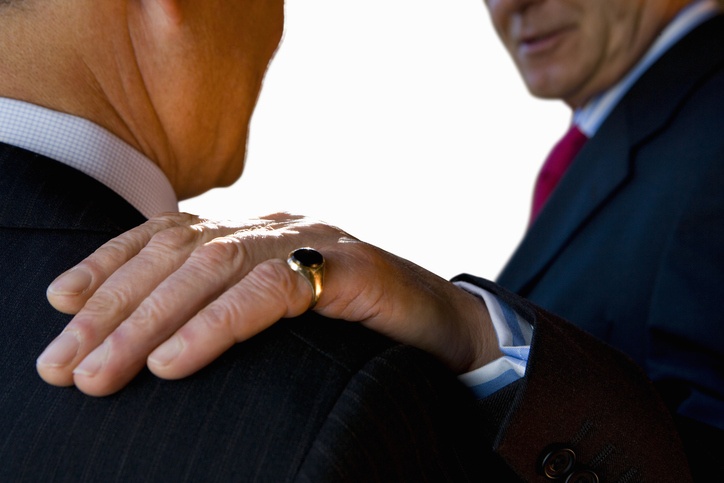Many of us find ourselves, from time to time, in the position of having to give advice to friends and acquaintances. In those circumstances, it’s simply human nature that the person who is seeking the advice is frequently more than a bit resistant to following it. So the person giving advice needs to figure out ways to overcome that resistance and to persuade the friend.
I believe that the same principles that help us persuade our fellow human beings to follow our advice are also very helpful for trial lawyers who want to convince a jury of the rightness of their case. Here are some of them.
To me, the essence of persuasion is trust. If that friend trusts you, she is much more likely to follow your advice. The same is true of a jury. Much of a trial team’s work can be seen as a concerted effort to build up trust with the jury.
Trust has several components. Certainly, a key component is credibility. Do your background and experience indicate to the jury that you know what you’re talking about? Another component is comfort. Standing before the jury, do you appear comfortable and at ease with what you are advising the jurors?
Yet another aspect is rapport. This is a matter of addressing the jury directly and being mindful and focused so as to develop a connection with the jurors. No distractions or multi-tasking can be appropriate. The jury is your only focus. Then of course there is empathy. This is very important in the context of advice-giving to friends, and even more so with a jury. If your client is, say, a large company accused of polluting a river, you need to empathize with the jurors’ possible bias against your client. You need to give them a narrative that will help them change their preconceptions.
Then there is culture. That is hard to define, but it involves all of the life experiences that the jurors come to court with. You wouldn’t speak identically to a jury in a high-income New York suburb as you would to a jury in the West Texas plains or the Florida Keys.
In addition to trust, a key element of persuasion is logical argument. You can have a great deal of credibility with a friend and share her cultural background, but if your advice doesn’t make sense, she won’t follow it. The same is true of a jury.
Finally, one must not neglect the importance of time. Even your best friend wouldn’t want you to waste his time while giving advice in a drawn-out way, and juries too tend to tune out an argument that is too lengthy and complicated. As with the other components, a good deal of the art of persuasion amounts to common sense.
Other free A2L articles related to persuasion techniques, connecting with jurors, and being likable in the courtroom include:
- Three Top Trial Lawyers Tell Us Why Storytelling Is So Important
- Like It or Not: Likability Counts for Credibility in the Courtroom
- Still Think Persuasion is About Talking While Showing Bullet Points?
- Free A2L Consulting Webinar: Persuasive Storytelling for Litigation
- SPICE Is the Key to Persuasion
- Free A2L Consulting Webinar: Winning Your Case BEFORE Trial Using Persuasive Litigation Graphics — Watch OnDemand Now
- Free A2L Consulting Webinar: 5 Ways to Maximize Persuasion During Opening Statements — Watch Anytime
- How Pictures Are Increasingly Influencing You
- 5 Ways to Apply Active Teaching Methods for Better Persuasion
- 12 Ways to SUCCESSFULLY Combine Oral and Visual Presentations
- 5 Chart Tricks and Cheats to Watch Out For
- 7 Ways to Avoid Making Your PowerPoint Slides Your Handout
- 14 Tips for Delivering a Great Board Meeting Presentation
- Presentation Graphics: Why The President Is Better Than You
- 12 Reasons Bullet Points Are Bad (in Trial Graphics or Anywhere)
- 8 Videos and 7 Articles About the Science of Persuasion
- Could Surprise Be One of Your Best Visual Persuasion Tools?
- How to Be a Great Expert Witness (Part 3)





Leave a Comment